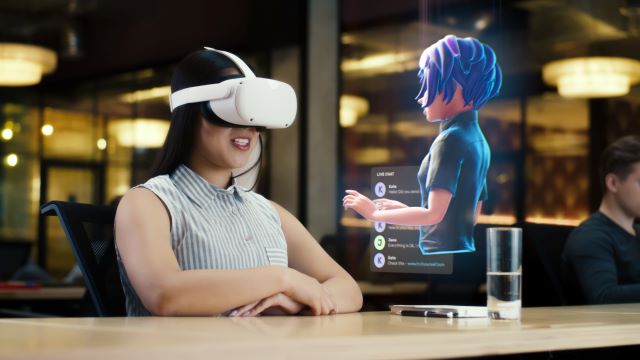
Did you know that at Cal State San Bernardino’s Extended Reality for Learning (xREAL) Lab, teachers of tomorrow are using augmented reality to make classes more exciting and help students learn better? (Photo contributor: Frame Stock Footage, Shutterstock)
The xREAL Lab, in partnership with Information Technology Services at Cal State San Bernardino (CSUSB), focuses on immersive learning experiences using 3D modeling and printing, augmented reality, mixed reality, virtual reality, motion caption, and machine learning technologies.
The lab brings together faculty, staff, and students from various disciplines to work towards future teaching and learning goals, mentor students, and promote sustainable innovation. The xREAL Lab is supported by the Vital and Expanded Technologies Initiative (VETI).
James R. Watson and Judy Rodriguez Watson College of Education students collaborated with the xREAL Lab to integrate technology, such as AR, into their lesson planning.
The students, enrolled in Social Studies and the Arts Teaching and Learning classes, were taught by Jordi Solsona-Puig, assistant professor of education, and learned to design learning experiences using AR and 3D resources in an equitable approach.
The students created an augmented reality gallery walk showcasing artifacts from their lesson unit and developed an AR app that allows the exploration of a timeline featuring a curated collection of 3D models representing different forms of transportation.
The teacher candidates said that AR technology should be implemented in more classrooms as it benefits all students, particularly those who struggle with social studies.
Solsona-Puig emphasized that there is an equitable component in using AR technologies in the classroom, which reduces the barriers for some students, such as time, space, or language. Multiple access to the content, virtual field trips, or instant language translation can help reduce the learning gap of minoritized students.
As part of the collaboration between the xREAL Lab and the Watson College of Education, students designed a virtual reality museum. The project demonstrated the immense possibilities of combining AR technology and lesson design.
Exciting news! Future teachers are embracing technology and integrating AR into their lesson planning. Learning is becoming immersive and engaging thanks to the collaboration with #CSUSB's xREAL Lab!
.
Learn more: https://t.co/w8U65F7Bym
.
.
.#BoldVision pic.twitter.com/ASc6Hlfmvm— CSUSB (@CSUSBNews) June 23, 2023
.@EdExcelencia congratulates the 2023 #LatinoGrads from @CSUSBNews, a Hispanic-Serving Institution w/69.2% of Hispanic students undergraduate full-time equivalent enrollment & part of the P4LSS network!
Celebrate #LatinoStudentSuccess & learn about #HSIs→https://t.co/XR7gRgNtJD pic.twitter.com/aVltKCH9tE
— EdExcelencia.org (@EdExcelencia) July 3, 2023
The U.S. Army Corps of Engineers has been tasked with…
Brown and Caldwell, a leading environmental engineering and construction firm,…
Humboldt State University, one of four campuses within the California…